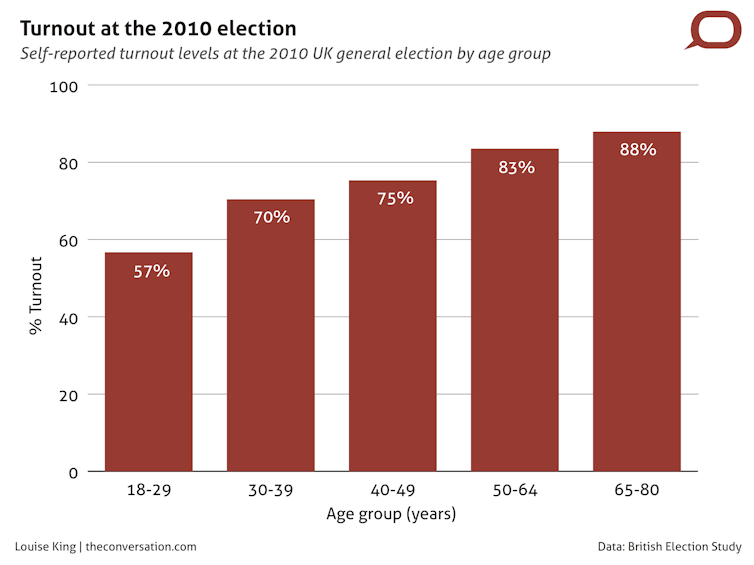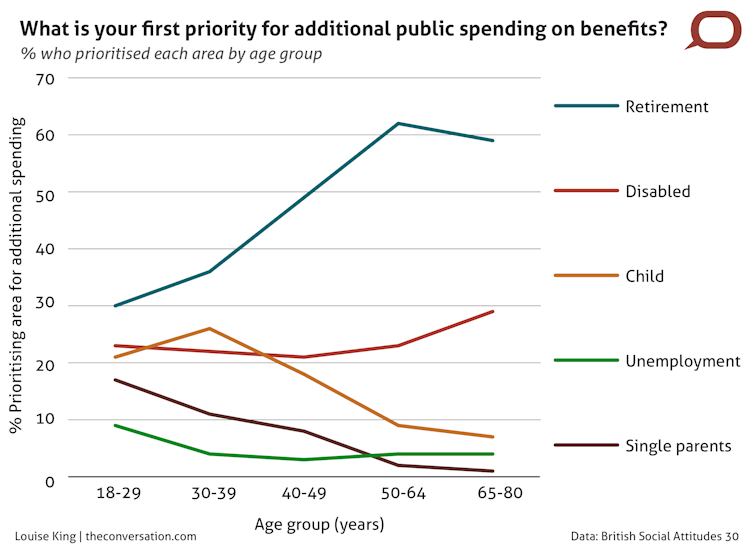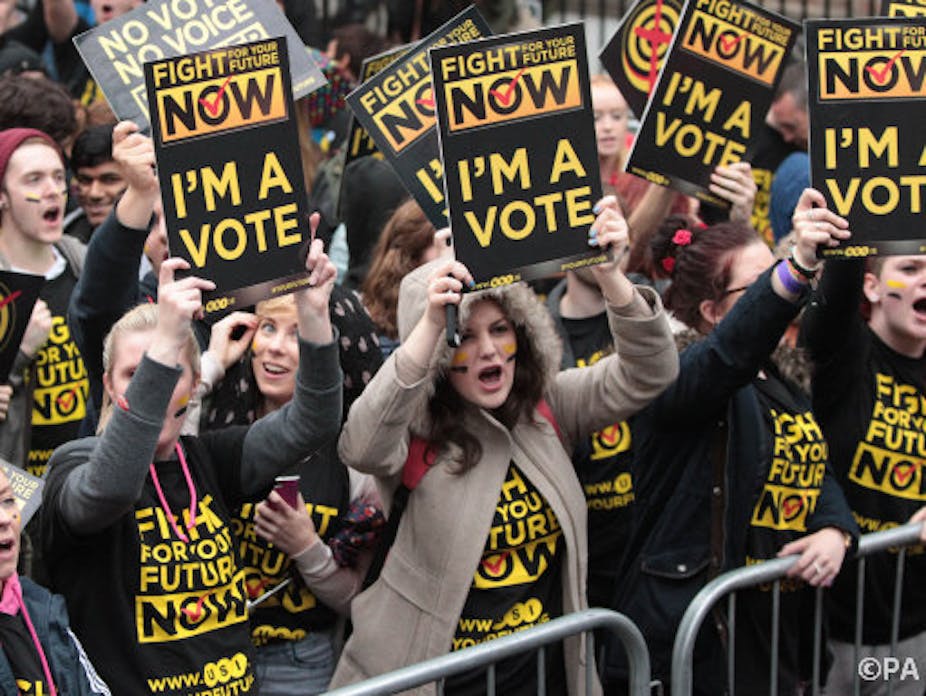It has become a truism in the UK that government policy favours older generations because they vote in much larger numbers than young people. This assumption was central to the recent recommendation made by former cabinet secretary Gus O’Donnell – angered by the blanket provision of the winter fuel allowance and other retirement benefits – to consider introducing compulsory voting. Doing so, he argued, would end “the ludicrous bias whereby the old are subsidised by the young”.
The idea that governments cynically serve older people because they’re more likely to vote surfaces across the political spectrum. A cursory search reveals the idea being repeated by Polly Toynbee and Jonathan Freedland in the Guardian, Brian Groom and Janan Ganesh in the Financial Times, and Tim Wigmore in the Telegraph.
Those who show up
Given recent turnout figures and the apparent direction of government policy, it seems like a reasonable enough conclusion. On turnout, numerous studies have shown that young people vote significantly less than their elders; the chart below displays self-reported turnout levels at the 2010 UK general election as reported in the British Election Study:

The claim that government policy tends to favour older people over younger people is superficially supported by evidence, even if we can debate whether this is the most appropriate way to judge policy. Anecdotally, we might point to the huge increase in university tuition fees introduced by the coalition government, or various older-voter appeals like a recent pledge to protect pensions.
Some evidence has been produced to back up this anecdotage: a more thorough analysis of the government’s 2010 Spending Review by the IPPR and Sarah Birch showed that although all age groups have been affected negatively by cuts, the young are suffering more than the old.
But actually demonstrating a relationship between age, voting and policy is much more difficult. First of all, the fact is that young people do vote. While not nearly such keen participants as older people, young people still represent a significant chunk of the electorate.
If only half of 18-29 year-olds took part in a general election, for instance, this would still be more than 4.5m voters, or almost 7,000 per constituency; interestingly, 128 seats were won with majorities of less than 3,000 votes in 2010.
Even accounting for their relatively low turnout and uneven distribution across constituencies, this group features prominently among the voting population of every Westminster constituency.
Matter of priorities
When we look at data on public policy preferences across age groups, we find a further flaw in the assumptions made by Gus O’Donnell and other commentators. Even if the young voted in greater numbers and exerted even more political influence there is little indication they would use it to push for a radical rebalancing of policy in favour of a distinct set of interests.
This is because many policies are consistently highly rated by all age groups. As shown in the chart below, when British Social Attitudes survey respondents were asked what policy area they would nominate for additional public spending, young people’s preferences did not differ significantly from older people’s. All groups overwhelmingly ranked health and education as top priorities, with health the most popular for each. In fact, 18-29 year-olds ranked health more highly than 30-39 year-olds, and they matched 40-49 year-olds.
Even among the less-favoured policy areas there was similarity across generations, with housing and help for industry comprising the third and fourth preferences among all but the 50-59 year-olds (who narrowly ranked defence over housing).

Another BSA survey question asked respondents to name their first priority for additional spending on welfare benefits. Again, the main finding was the similarity of preferences across generations: all age groups, including 18-29 year-olds, gave retirement benefits as their strongest preference.
The strength of feeling did increase with age: twice as many over-50s said that retirement benefits were their first priority compared to the under-30s. But this does not alter the fact that retirement benefits are the most popular form of welfare among young people and older people alike.

These findings tally with those from the International Longevity Centre, which found in 2010 that people across age groups prioritised the same three areas when asked where spending cuts should take place (transport, unemployment benefits and defence), and all showed a preference for protecting pension spending.
Clearly, people do not think or vote in blocs. The common assumption that they do is not only contradicted by the evidence, it is based on an incredibly simplistic idea of how power and politics work. If simply “turning up” on election day every few years were enough to ensure genuine influence on policy, we would probably live in a very different world.
Meanwhile, the twin notions that all voters clearly understand what their interests are in relation to each item of government expenditure and that they share their understanding with fellow citizens of a similar age are both rather ludicrous.
It seems apparent that even if young people voted in much greater numbers than at present, there would be far less pressure for government to shift its priorities than so many so casually assume.

